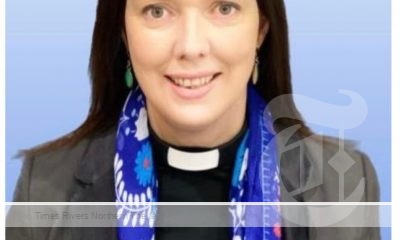Ancient Megafauna to descend on Museum
Travel back in time and immerse yourself in natural history
Ancient giants from a forgotten time will come to life at the opening of the Tweed Regional Museum’s latest show Capturing Nature which explores some of the earliest Australian natural history photographs.
 The opening, which is the museum’s latest Up Late event, will offer viewers a chance to watch and interact with giant roaming Diprotodons in a one-of-a-kind interactive puppetry performance.
The opening, which is the museum’s latest Up Late event, will offer viewers a chance to watch and interact with giant roaming Diprotodons in a one-of-a-kind interactive puppetry performance.
The audience can explore the fascinating exhibition of Australia’s first photographs of natural history, and as part of the night, they can morph themselves into an endangered species and be captured on film by museum archivists – just like a species would have been in the 1800s.
The museum courtyard will be abuzz with mini-fossil-dig activities, bags of popcorn for grazing creatures and live music, along with food and a variety of drinks for adult explorers to purchase on the night.
The family-friendly event, which is set to ignite imaginations of all ages, will be held on Saturday 29 October from 4 pm to 8 pm.
Capturing Nature: Early photographs at the Australian Museum 1857-1893 allows its viewers to travel back to a time when photography was revolutionising science, art and society.
The exhibition images showcase the discoveries of scientists between the 1850s and 1890s, while also telling the story of the advent of photography.
They tell the story of pioneering natural history and science in Australia at a time when photography was becoming an indispensable part of museum practice.
Reproduced from the Australian Museum’s collection of glass plate negatives from 1857 to 1893, these are some of Australia’s earliest natural history photographs.
The subjects vary from a large sunfish and the flipper of a sperm whale to a gorilla and the fragile bones of a flamingo.
Most of the specimens photographed at the museum are by taxidermist Henry Barnes and his son, Henry Barnes Jnr, with the help of the Australian Museum’s pioneering curator Gerard Krefft.
Australian Museum Director and CEO Kim McKay AO said some of the earliest adopters of photography were scientists.
“They were quick to see its enormous potential for capturing the process of discovery and describing new species which are the foundation of scientific practice,” she said.
“In the Victorian era, museums were the public face of science. At the Australian Museum, the arrival of curator and scientist Gerard Krefft in 1864 marked a fortuitous coming together of skills, experience and technology.”
Tweed Regional Museum Director Molly Green said the powerful photographs were beautiful and haunting.
“These are the photographs that introduced the world to the fledgling colony’s unusual plants and animals. They have not only been used by scientists but have inspired artists and creative makers up to the present day,” Ms Green said.
“The exhibition brings together a unique record of early Australian science and applied contemporary art.”
If you miss the giant Diprotodons on opening night, don’t despair. They will be taking refuge in a prehistoric installation in the Museum until they leave to roam this land again at the final Museum Up Late Street Party on Saturday 28 January 2023.
Book your spot here for the Museum Up Late Event and Exhibition Opening.
For more about Capturing Nature: Early photographs at the Australian Museum 1857-1893, visit: Capturing Nature | Tweed Regional Museum (nsw.gov.au)





 Tweed Shire News2 years ago
Tweed Shire News2 years ago
 Motoring News1 year ago
Motoring News1 year ago
 COVID-19 Northern Rivers News3 years ago
COVID-19 Northern Rivers News3 years ago
 COVID-19 Northern Rivers News3 years ago
COVID-19 Northern Rivers News3 years ago
 Northern Rivers Local News3 years ago
Northern Rivers Local News3 years ago
 Health News3 years ago
Health News3 years ago
 COVID-19 Northern Rivers News3 years ago
COVID-19 Northern Rivers News3 years ago
 NSW Breaking News3 years ago
NSW Breaking News3 years ago





 The opening, which is the museum’s latest Up Late event, will offer viewers a chance to watch and interact with giant roaming Diprotodons in a one-of-a-kind interactive puppetry performance.
The opening, which is the museum’s latest Up Late event, will offer viewers a chance to watch and interact with giant roaming Diprotodons in a one-of-a-kind interactive puppetry performance.






















